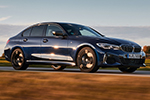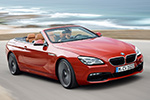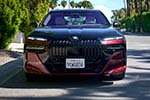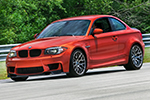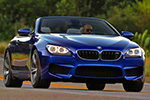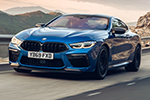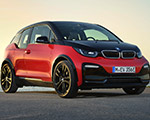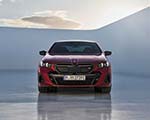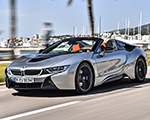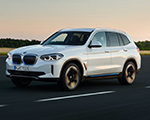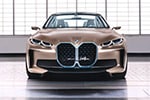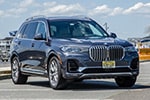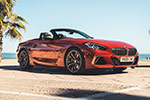BMW just scored a major win over Mercedes-Benz. In the third quarter of 2025, BMW sales jumped 8.8 percent worldwide, while Mercedes deliveries plunged 12 percent — one of the sharpest gaps between the two German luxury giants in years.
Mercedes moved 441,500 cars between July and September, plus another 83,800 vans, but even that couldn’t stop the slide. BMW, meanwhile, delivered 514,620 BMW-branded vehicles, up 5.7 percent, and when you include MINI, Rolls-Royce, and BMW M, the BMW Group reached 588,300 units in total.
It’s not just the headline numbers that matter, though — it’s where those sales came from, and how differently each brand performed across global markets.
BMW Gains Ground In The U.S. As Mercedes Loses Steam
The American market was a tale of two very different outcomes. For Mercedes, the quarter was brutal. Sales dropped 17 percent to 70,800 units, hurt by tariffs and a slowdown in luxury demand. BMW, meanwhile, surged ahead — U.S. deliveries jumped 24.9 percent to 104,163 units, marking one of the brand’s best quarters in recent years.
Strong demand for SUVs like the X5 and X7, combined with steady interest in performance models such as the M3 and M4, helped BMW pull off a rare double-digit gain in a market that’s been challenging for most automakers.
China Still Tough, But BMW Fares Better
China continues to be a problem for both brands, but Mercedes took a far bigger hit. Its sales plunged 27 percent to 125,100 units, while BMW limited its drop to 11 percent, with 147,121 units delivered. In fact, BMW-branded cars alone were slightly up by 0.4 percent year-over-year — a small but telling victory in a slowing market.
Across Asia, the pattern held. Mercedes was down 22 percent, while BMW stayed nearly flat, moving 206,156 units. Both automakers face fierce competition from local EV makers, but BMW’s broader lineup and brand positioning seem to be cushioning the blow.
Europe And Germany Keep BMW’s Momentum Rolling
In Europe, both brands posted small gains, though BMW’s was significantly stronger. Mercedes deliveries rose 2 percent to 160,800, while BMW’s climbed 9.3 percent to 239,620.
At home in Germany, the difference was even more noticeable. BMW sold 72,939 units, up 12.3 percent, compared to Mercedes’ 51,600 units, a modest 3 percent improvement. The gap highlights how BMW’s newer lineup and fresher product mix — from compact models to plug-in hybrids — continues to resonate with buyers.
Electric Divide: BMW Keeps Climbing, Mercedes Stalls
The electrification race is another area where the gap is widening. Mercedes-Benz delivered 42,600 BEVs in the third quarter, nearly identical to last year’s figure. Flat growth at a time when competitors are gaining ground suggests trouble for Stuttgart.
BMW Group, by contrast, moved 151,282 electrified vehicles (including BEV and PHEV models), an 8 percent increase over last year. Of those, 102,864 were pure electric, just 0.6 percent lower than Q3 2024, but still 10 percent higher year-to-date.
The U.S. remains a weak spot for BMW’s EVs, with electrified sales dipping 2.8 percent last quarter. That said, with the Neue Klasse iX3 and i3 sedan right around the corner, BMW appears better positioned for long-term EV growth.
Sub-Brands Add To BMW’s Advantage
BMW’s strength also comes from its sub-brands, each of which performed exceptionally well this quarter. MINI saw a massive 37.5 percent increase to 72,376 units, driven by strong early demand for its new electric models. BMW M climbed 11 percent to 52,220 units, and Rolls-Royce rose 13.3 percent to 1,304 units — proof that even at the ultra-luxury end, BMW Group’s momentum continues.
This diversification gives BMW an edge. With multiple profitable divisions — from electric MINIs to M performance cars — the company can weather regional challenges better than Mercedes, which relies more heavily on its core lineup.
The Road Ahead
Both automakers are gearing up for a crucial 2026. Mercedes will roll out its new EQ-infused GLC and revamped compact models, while BMW prepares for the debut of its Neue Klasse i3 sedan and iX3 SUV — vehicles that could define the next decade for the brand.
For now, though, the numbers speak for themselves. BMW isn’t just ahead — it’s pulling away.
BMW sold 514,620 BMW-branded vehicles in Q3 2025, up 5.7% year-over-year. Including MINI, Rolls-Royce, and BMW M, the BMW Group total reached 588,300 units, up 8.8%.
Mercedes-Benz sold 441,500 cars in Q3 2025, down 12% compared to 2024, and 83,800 vans, also below prior-year levels.
BMW outsold Mercedes globally by a wide margin, with nearly 147,000 more vehicles delivered in Q3 2025.
BMW’s U.S. sales surged 24.9% to 104,163 units, while Mercedes dropped 17% to 70,800.
BMW Group sold 151,282 electrified vehicles (BEV + PHEV) in Q3 2025, an 8 percent increase year-over-year. Of those, 102,864 were fully electric, down just 0.6 percent from 2024 but up 10 percent year-to-date.






































